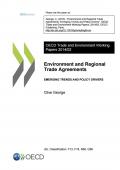This report outlines a range of systemic interrelated measures for a progressive transformation towards low-energy, low-carbon, highly resilient and ultimately climate neutral cities. Its recommendations fall under four main headings, with coordination through a well managed city-level framework being perhaps the most essential ingredient for success.
1) Waste management: Options and criteria for recycling, the production of biofuels and incineration.
2) Low-carbon mobility: Disincentives for using cars, along with the promotion of non-motorised and good public transport, and the introduction of alternative fuels infrastructure.
3) Urban energy infrastructure: Incentives to stimulate increased use of renewable energy, and promote energy-efficient technologies and intelligent electric grid systems for city facilities.
4) Urban form and green spaces: Techniques to reduce and prevent sprawl, while preserving and expanding green and open spaces, mitigating the urban heat island effect.
This report illustrates the multiple environmental, economic and social benefits arising from a transition towards energy-efficient housing. It outlines the required institutional changes and provides some basic principles for successful policies.
The study intends to reach national policymakers, decision-makers and experts and aims to facilitate a sustainable transition to energy efficient housing.
The report includes case studies from Austria, Russia, Kyrgyzstan, and Bulgaria.
This Action Plan provides a framework for the member States of the region to raise energy efficiency in the housing sector and thus enables them to address environmental and economic challenges and meet social needs. The Action Plan lists a range of measures aimed at removing barriers to energy efficiency and progressively moving towards a low-energy and ultimately zero energy and carbon neutral housing sector.
The Action Plan outlines three policy areas for action:
1) Policy area I: energy efficiency governance and financial infrastructure.
2) Policy area II: energy performance standards and technology integration.
3) Policy area III: access to energy efficiency and public housing.
Fast-growing cities in the East Asia and Pacific (EAP) region will define the region's energy future and its greenhouse gas (GHG) footprint. Rapid urbanization and growing standards of living offer a major opportunity to EAP cities to become the global engines of green growth by choosing energy efficient solutions to suit their infrastructure needs and by avoiding locking in energy-intensive infrastructure. The underlying studies in three EAP pilot cities show a clear correlation between investments in energy efficient solutions in all major infrastructure sectors and economic growth by improving energy and GHG emissions efficiency, cities not only help the global environment, but they also support local economic development through productivity gains, reduced pollution, and more efficient use of resources. This paper is organized as follows: part one focuses on urban energy use and GHG emissions in EAP; part two presents sustainable urban energy and emissions planning in three pilot cities; and part three gives sustainable urban energy and emissions planning guidebook: a guide for cities in EAP.

This report examines trends in the use of environmental provisions in Regional Trade Agreements and identifies factors which may explain the presence or absence of these provisions. The report builds on work of the OECD Joint Working Party on Trade and Environment (JWPTE) and includes results of an informal survey of delegates.
Analysis of the environmental provisions in RTAs reveals an encouraging upward trend. While basic provisions remain the most common types found in RTAs, the incidence of more substantive provisions has increased significantly in recent years. Among these, environmental co-operation has been the most common type.
Several factors may have contributed to this evolution. These include countries extending their political mandates for RTAs, for example to include provisions for compliance with multilateral environmental agreements (MEAs), as well as a general accumulation of experience with the use of environmental provisions.
The report includes case studies from Australia, Canada, Chile, the European Union, Japan, New Zealand, United States and Switzerland.
